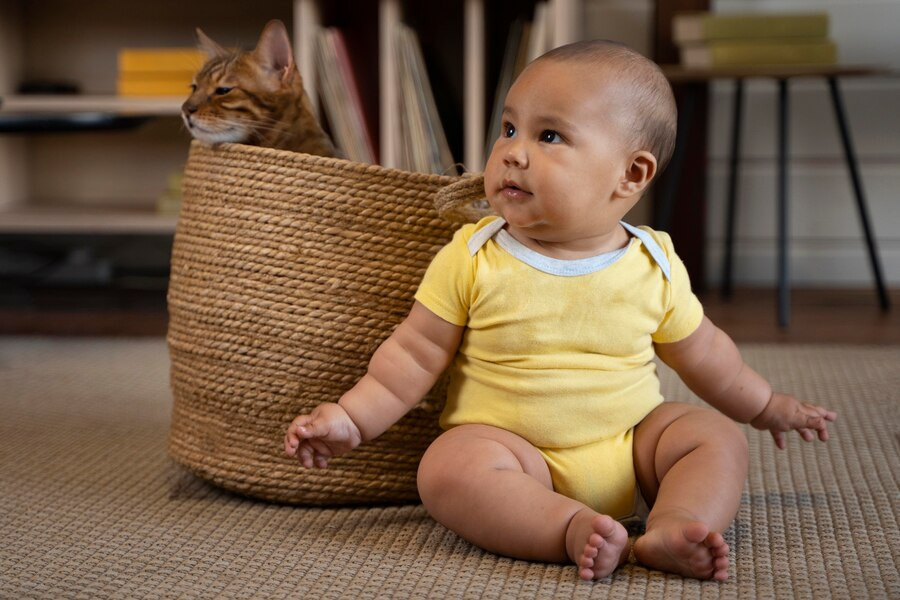The development of each baby is different, and this includes the ability to sit independently. Babies typically develop the ability to sit independently between the ages of four and seven months. Babies typically hold adequate head control and back muscles that are strong enough to keep them in a seated position for a short time without requiring assistance at this age.
There are certain babies who may sit earlier or later than the average age range. A number of factors, including muscle strength, coordination, and opportunity for training, need to be considered. The right stimulation might help the baby sit down on their own immediately. How is the right stimulation?
Ideas for stimulating babies to sit independently
There are several stimulations that parents can implement to help their babies develop the ability to sit independently, such as:
Give basic support
When the baby reaches four months of age, you can introduce sitting stimulation. You can stimulate the baby in this way by putting them in a baby chair, stroller, or on your lap. Take the baby for a stroll and expose them to captivating stimuli in their surroundings to enhance their attraction to sit in an upright position.
Give toys
Giving objects to hold helps balance development for young babies. After the baby is seated with a cushion either on your lap or around him, offer him a toy. Toys encourage babies to strive for longer-term balance in a seated position.
Tummy time
Tummy time is the action of gently laying a baby to sleep on a level, hard surface in a prone posture. Important for sitting, the baby's neck, back, and stomach muscles can be strengthened with tummy time.
Tummy time may start even a few days after the baby is born, early on. Start by putting the infant on his stomach on top of your chest or stomach. Spend a few minutes, then split it into multiple daily sessions. Tummy time should be gradually extended to let the baby's strength rise.
More time spent playing on flat surfaces
Spending more time on the floor promotes baby independence and helps in many aspects of motor development, including the ability to sit.
You only need to make sure that the baby's play area on the floor doesn't have any small or dangerous things that could hurt or choke the baby. For extra comfort and safety, use a play mat with soft, padded edges.
Safety when babies learn to sit: tips and tricks
To keep your baby safe, here are some things you should keep in mind as you help them learn to sit:
- When the baby sits on a mat, cushion, or other soft surface, keep a close eye on them. To keep people from falling and hurting themselves, they need to be monitored.
- Make sure the baby is wearing clothes that are soft and don't get in the way of his moves. Too-tight clothes can make the baby unhappy and make it hard for them to move, which can hurt them.
- Sitting practice should be done when your baby is full, awake, and not too tired so that he can concentrate and feel comfortable while learning.
These are some essential stimulations that enable babies to sit up fast on their own. If the baby looks to have little strength in the upper body or back, cannot sit alone without help at the age of nine months, does not seem interested in activities involving movement, or does not try to reach toys, you should be cautious. Take the baby immediately for assessment and see a pediatrician or child development specialist.
If you have further inquiries regarding baby growth milestones, you can either visit a doctor or make use of the consultation features that are available in the Ai Care application by downloading the Ai Care application from the App Store or Play Store.
Looking for more information about pregnancy, breastfeeding, and the health of women and children? Click here!
- dr. Monica Salim
Ashley Marcin (2023). When Can Babies Sit Up and How Can You Help a Baby Develop This Skill?. Available from: https://www.healthline.com/health/parenting/when-can-babies-sit-up#early-signs
Kelly Kamenetzky (2022). How to Help a Baby Sit Up. Available from: https://www.verywellfamily.com/how-to-help-a-baby-sit-up-5213803
Maressa Brown (2021). When Your Baby Will Sit Up — With Your Help and Alone. Available from: https://www.whattoexpect.com/first-year/sit-up/
Joanne Lewsley. Developmental milestones: sitting. Available from: https://www.babycentre.co.uk/a6505/developmental-milestones-sitting
Eunice Kennedy Shriver National Institute of Child Health and Human Development. Tummy Time for a Healthy Baby. Available from: https://safetosleep.nichd.nih.gov/reduce-risk/tummy-time











